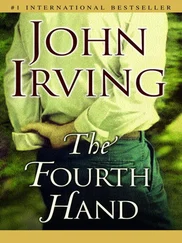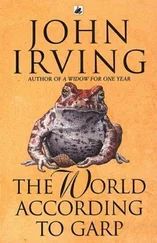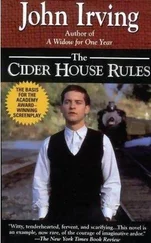“Up there,” Ganesh told Dr. Daruwalla, pointing to the top of the tent, “I wouldn’t walk with a limp.”
“Don’t even think about it,” the doctor said.
But the screenwriter couldn’t stop thinking about it, for it would be the perfect ending to his movie. After the lion kills Pinky—and justice is done to Acid Man (perhaps acid could accidentally be spilled in the villain’s crotch)—Ganesh knows that the circus won’t keep him unless he can make a contribution. No one believes he can be a skywalker—Suman won’t give the crippled boy lessons, and Pratap won’t let him practice on the ladder in the troupe tent. There is nowhere he can learn to skywalk, except in the main tent; if he’s going to try it, he must climb up to the real device and do the real thing—at 80 feet, with no net.
What a great scene! the screenwriter thought. The boy slips out of the cook’s tent in the predawn light. There’s no one in the main tent to see him climb the trapeze rope to the top. “If I fall, death happens,” his voice-over says. “If no one sees you die, no one says any prayers for you.” Good line! Dr. Daruwalla thought; he wondered if it was true.
The camera is 80 feet below the boy when he hangs upside down from the ladder; he holds the sides of the ladder with both hands as he puts his good foot and then his bad one into the first two loops. There are 18 loops of rope running the length of the ladder; the Skywalk requires 16 steps. “There is a moment when you must let go with your hands,” Ganesh’s voice-over says. “I do not know whose hands I am in then.”
The boy lets go of the ladder with both hands; he hangs by his feet. (The trick is, you have to start swinging your body; it’s the momentum you gather, from swinging, that allows you to step forward—one foot at a time, out of the first loop and into the next one, still swinging. Never stop the momentum… keep the forward motion constant.) “I think there is a moment when you must decide where you belong,” the boy’s voice-over says. Now the camera approaches him, from 80 feet away; the camera closes in on his feet. “At that moment, you are in no one’s hands,” the voice-over says. “At that moment, everyone walks on the sky.”
From another angle, we see that the cook has discovered what Ganesh is doing; the cook stands very still, looking up—he’s counting. Other performers have come into the tent—Pratap Singh, Suman, the dwarf clowns (one of them still brushing his teeth). They follow the crippled boy with their eyes; they’re all counting—they all know how many steps there are in the Skywalk.
“Let other people do the counting,” Ganesh’s voice-over says. “What I tell myself is, I am just walking—I don’t think skywalking , I think just walking . That’s my little secret. Nobody else would be much impressed by the thought of just walking. Nobody else could concentrate very hard on that. But for me the thought of just walking is very special. What I tell myself is, I am walking without a limp.”
Not bad, Dr. Daruwalla thought. And there should be a scene later, with the boy in full costume—a singlet sewn with blue-green sequins. As he descends on the dental trapeze, spinning in the spotlight, the gleaming sequins throw back the light. Ganesh should never quite touch the ground; instead, he descends into Pratap’s waiting arms. Pratap lifts the boy up to the cheering crowd. Then Pratap runs out of the ring with Ganesh in his arms—because after a cripple has walked on the sky, no one should see him limp.
It could work, the screenwriter thought.
After the performance, they managed to find where Ramu had parked the Land Rover, but they couldn’t find Ramu. The four of them required two rickshaws for the trip across town to the Government Circuit House; Madhu and Farrokh followed the rickshaw carrying Ganesh and Martin Mills. These were the three-wheeled rickshaws that Dr. Daruwalla hated; old Lowji had once declared that a three-wheeled rickshaw made as much sense as a moped towing a lawn chair. But Madhu and Ganesh were enjoying the ride. As their rickshaw bounced along, Madhu tightly gripped Farrokh’s knee with one hand. It was a child’s grip—not sexual groping, Dr. Daruwalla assured himself. With her other hand, Madhu waved to Ganesh. Looking at her, the doctor kept thinking: Maybe the girl will be all right—maybe she’ll make it.
On the mud flaps of the rickshaw ahead of them, Farrokh saw the face of a movie star; he thought it might be a poor likeness of either Madhuri Dixit or Jaya Prada—in any case, it wasn’t Inspector Dhar. In the cheap plastic window of the rickshaw, there was Ganesh’s face—the real Ganesh, the screenwriter reminded himself. It was such a perfect ending, Farrokh was thinking—all the more remarkable because the real cripple had given him the idea.
In the window of the bouncing rickshaw, the boy’s dark eyes were shining. The headlight from the following rickshaw kept crossing the cripple’s smiling face. Given the distance between the two rickshaws and the fact that it was night, Dr. Daruwalla observed that the boy’s eyes looked healthy; you couldn’t see the slight discharge or the cloudiness from the tetracycline ointment. From such a partial view, you couldn’t tell that Ganesh was crippled; he looked like a happy, normal boy.
How the doctor wished it were true.
The Night of 10,000 Steps
There was nothing to do about the missing piece of Martin’s earlobe. Altogether, Dr. Daruwalla used two 10mL vials of the human rabies immune globulin; he injected a half-vial directly into each of the three wound areas—the earlobe, the neck, the hand—and he administered the remaining half-vial by a deep intramuscular injection in Martin’s buttocks.
The hand was the worst—a slash wound, which the doctor packed with iodophor gauze, A bite should drain, and heal from the inside, so Dr. Daruwalla wouldn’t stitch the wound—nor did the doctor offer anything for the pain. Dr. Daruwalla had observed that the missionary was enjoying his pain. However, the zealot’s limited sense of humor didn’t permit him to appreciate Dr. Daruwalla’s joke—that the Jesuit appeared to suffer from “chimpanzee stigmata.” The doctor also couldn’t resist pointing out to Martin Mills that, on the evidence of the scholastic’s wounds, whatever had bitten Farrokh (and converted him) in Goa was certainly not a chimp; such an ape would have consumed the whole toe—maybe half the foot.
“Still angry about your miracle, I see,” Martin replied.
On that testy note, the two men said their good-nights. Farrokh didn’t envy the Jesuit the task of calming Ganesh down, for the elephant boy was in no mood to sleep; the cripple couldn’t wait for his first full day at the circus to begin. Madhu, on the other hand, seemed bored and listless, if not exactly sleepy.
Their rooms at the Government Circuit House were adjacent to each other on the third floor. Off Farrokh and Madhu’s bedroom, two glass doors opened onto a small balcony covered with bird droppings. They had their own bathroom with a sink and a toilet, but no door; there was just a rug hung from a curtain rod—it didn’t quite touch the floor. The toilet could be flushed only with a bucket, which was conveniently positioned under a faucet that dripped. There was also a shower, of sorts; an open-ended pipe, without a showerhead, poked out of the bathroom wall. There was no curtain for the shower, but there was a sloped floor leading to an open drain, which (upon closer inspection) appeared to be the temporary residence of a rat; Farrokh saw its tail disappearing down the hole. Very close to the drain was a diminished bar of soap, the edges nibbled.
Читать дальше












